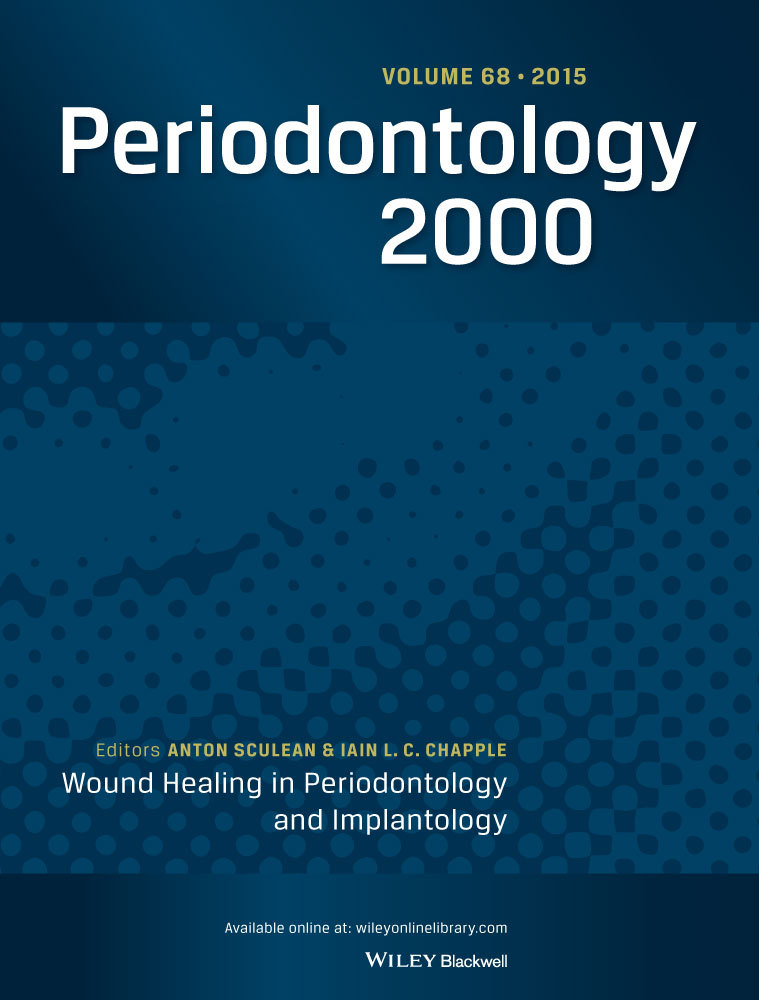口腔癌的生物标志物
IF 17.5
1区 医学
Q1 DENTISTRY, ORAL SURGERY & MEDICINE
引用次数: 0
摘要
口腔鳞状细胞癌(OSCC)的5年生存率为41%,在过去几年中略有改善,从2005年到2017年,每年改善不到1%,如果在早期发现,生存率会更高。根据口腔发育不良的组织病理学分级,估计严重发育不良的恶变率为 7%-50%。尽管有这些数字,但口腔发育不良的分级并不能可靠地预测其临床表现。因此,如果能有更准确的标志物来预测口腔发育不良向癌症的发展,就能更有针对性地对这些病变进行更密切的随访,尤其是在疾病的早期阶段。在这种情况下,来自遗传学、蛋白质和代谢物的分子生物标志物在临床肿瘤学中发挥着关键作用。这些分子特征有助于预测OSCC发展和/或恶化的可能性,并有可能在早期阶段发现疾病,支持治疗决策和预测治疗反应性。此外,确定用于检测 OSCC 的可靠生物标志物(可在无创情况下获得)将有助于加强对 OSCC 的管理。本综述将讨论从基因组学、转录物组学、蛋白质组学、代谢组学、免疫组学和微生物组学等不同生物学领域出现的 OSCC 生物标志物。本文章由计算机程序翻译,如有差异,请以英文原文为准。
Biological biomarkers of oral cancer
The oral squamous cell carcinoma (OSCC) 5 year survival rate of 41% has marginally improved in the last few years, with less than a 1% improvement per year from 2005 to 2017, with higher survival rates when detected at early stages. Based on histopathological grading of oral dysplasia, it is estimated that severe dysplasia has a malignant transformation rate of 7%–50%. Despite these numbers, oral dysplasia grading does not reliably predict its clinical behavior. Thus, more accurate markers predicting oral dysplasia progression to cancer would enable better targeting of these lesions for closer follow-up, especially in the early stages of the disease. In this context, molecular biomarkers derived from genetics, proteins, and metabolites play key roles in clinical oncology. These molecular signatures can help predict the likelihood of OSCC development and/or progression and have the potential to detect the disease at an early stage and, support treatment decision-making and predict treatment responsiveness. Also, identifying reliable biomarkers for OSCC detection that can be obtained non-invasively would enhance management of OSCC. This review will discuss biomarkers for OSCC that have emerged from different biological areas, including genomics, transcriptomics, proteomics, metabolomics, immunomics, and microbiomics.
求助全文
通过发布文献求助,成功后即可免费获取论文全文。
去求助
来源期刊

Periodontology 2000
医学-牙科与口腔外科
CiteScore
34.10
自引率
2.20%
发文量
62
审稿时长
>12 weeks
期刊介绍:
Periodontology 2000 is a series of monographs designed for periodontists and general practitioners interested in periodontics. The editorial board selects significant topics and distinguished scientists and clinicians for each monograph. Serving as a valuable supplement to existing periodontal journals, three monographs are published annually, contributing specialized insights to the field.
 求助内容:
求助内容: 应助结果提醒方式:
应助结果提醒方式:


